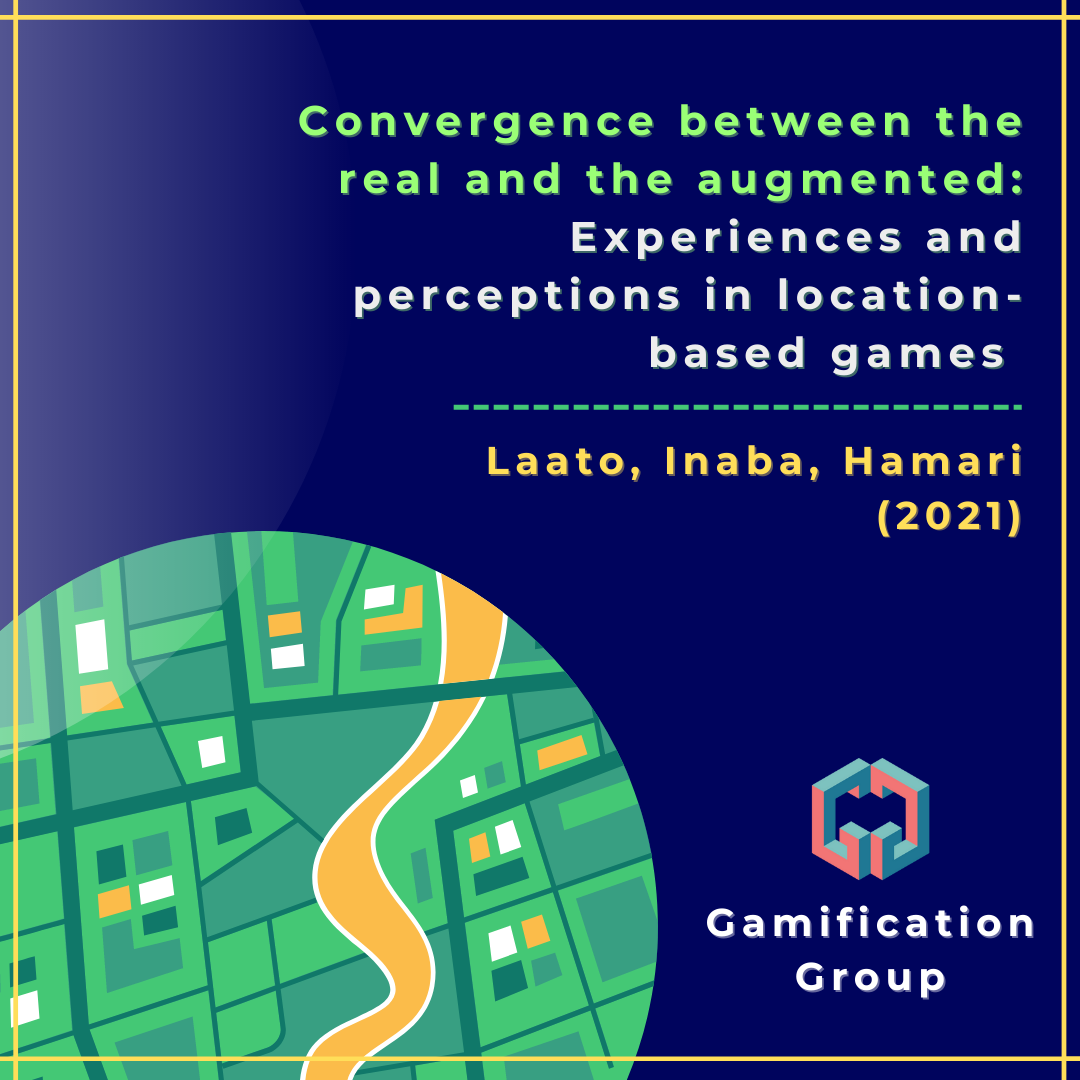
Convergence between the real and the augmented: Experiences and perceptions in location-based games
Location-based AR games (LBG) have gained massive popularity and monetary success in recent years. Many positive aspects of LBGs in terms of social well-being, physical activity, and more have been reported by various scholars. An important point regarding LBGs is the unique use of technical aspects such as AR and the association of real-world places as points of interest (PoI). This article explores players’ perceptions of these aspects through two main research questions: (1) “What is the role of the AR- mode in LBG players’ imagination, enjoyment and overall experience?”, (2) “How important is the linkage between virtual PoIs and physical world objects for LBGs players’ experience?”.
To answer these research questions, a method of interviewing players of four popular LBGs: Pokemon GO, Harry Potter: Wizards Unite (HPWU), The Walking Dead: Our World (WDOW), and Orna, was selected. However, due to the COVID pandemic, most participants (n=62) answered the questions via an online survey, while a minority were interviewed in person (n=12). Which then were combined for analysis. Data analysis consisted of three phases: (1) familiarization with the data, (2) formation of thematic clusters, and (3) qualitative coding of the raw data.
There are several important findings from this study. First, it was found that most players (93%) considered AR irrelevant through the cell phone camera. The most commonly cited reason for this was that the AR options often slowed down the game and hindered game progress. Second, players often did not imagine in-game content in the real world. Third, linking virtual points of interest to real-world locations had mixed outcomes. The biggest difference in games was that while players of Niantic games preferred linking points of interest to real-world locations, players of algorithmically generated games enjoyed that the games could be played in rural areas. Fourth, it was found that players wanted the PoI interaction radius to be large enough to allow them to move seamlessly while playing. Finally, participants did not desire a higher degree of convergence between the game and the real world, as they were generally satisfied with the degree of convergence.
It is noted this study has important implications for the design of LBG games such as the importance of finding new ways to motivate the use of AR features, finding the optimal PoI interaction radius, and considering how different players are affected by linking PoIs to real-world locations.
Laato, S., Inaba, N., & Hamari, J. (2021). Convergence between the real and the augmented: Experiences and perceptions in location-based games. Telematics and Informatics, 65, 101716.
https://doi.org/10.1016/j.tele.2021.101716
Abstract
Location-based augmented reality (AR) games have recently become massively popular, generating billions of dollars in revenue during the past five years. These games augment geographical areas with playful content, which makes the playing experience dependent on both the game and the playing location. Existing games have employed various methods for increasing the connection between the game and the physical world, such as (1) an AR mode that lets players see virtual objects in the physical world through the lens of their mobile device; and (2) connecting the game’s virtual points of interest (PoIs) to physical world objects. To explore how these influence the playing experience, we surveyed players (N = 74) across four popular location-based AR games. We analyzed the data using a thematic clustering approach, which resulted in five central themes. Among our findings was that only 7% of the surveyed players regularly used or appreciated AR features that made use of the mobile device’s camera. The most often given reason for this was that they slow down progression. By contrast, players appreciated location-based features and the augmentation of digital content on a map interface. Connecting the virtual content to physical world objects was seen to have the benefits of (1) supporting social meetings; (2) enabling learning about the real world; and (3) increasing the meaningfulness of the virtual content.




Sorry, the comment form is closed at this time.